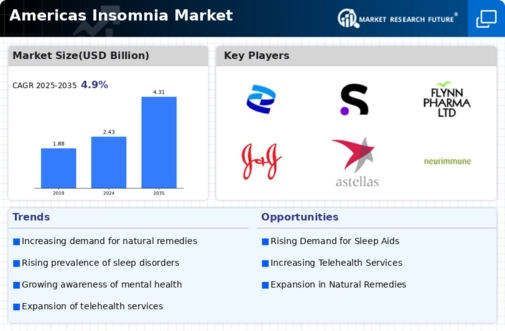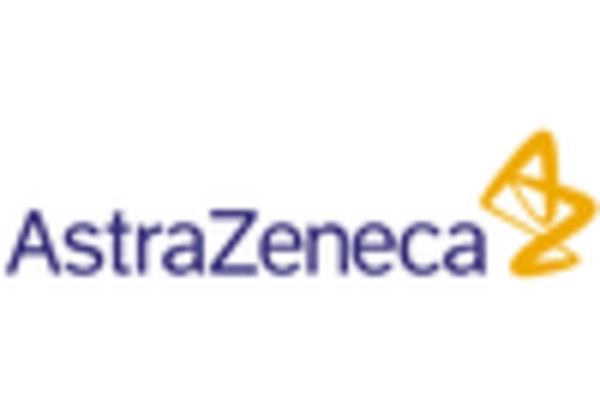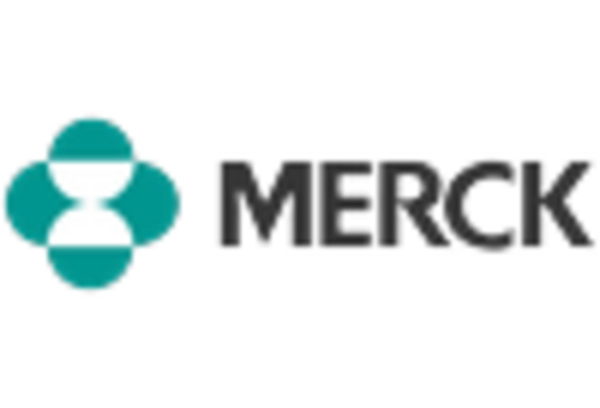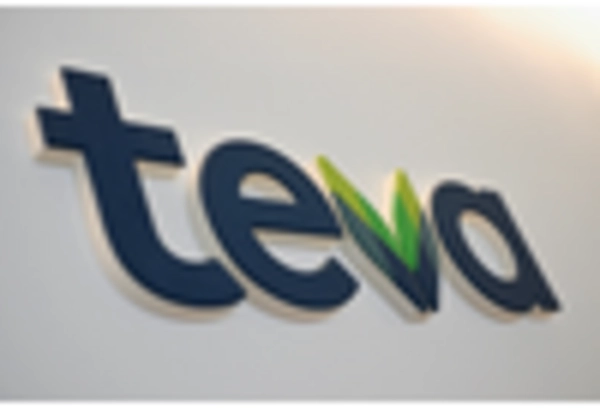Growing Prevalence of Insomnia
The rising prevalence of insomnia in the Americas is a critical driver for the Americas Insomnia Market. Recent studies indicate that approximately 30% of adults experience insomnia symptoms, with around 10% suffering from chronic insomnia. This growing incidence is attributed to various factors, including increased stress levels, lifestyle changes, and the pervasive use of technology. As more individuals seek effective solutions to manage their sleep disorders, the demand for insomnia treatments, including medications and therapies, is likely to escalate. This trend not only highlights the urgent need for innovative solutions but also presents significant opportunities for stakeholders within the Americas Insomnia Market to develop targeted interventions that address the specific needs of affected populations.
Advancements in Sleep Technology
Technological advancements in sleep monitoring and treatment devices are transforming the Americas Insomnia Market. Innovations such as wearable sleep trackers, smart mattresses, and mobile applications designed to improve sleep quality are gaining traction among consumers. The market for sleep technology is projected to grow significantly, with estimates suggesting a compound annual growth rate of over 20% in the coming years. These advancements not only provide users with valuable insights into their sleep patterns but also facilitate personalized treatment options. As consumers become more health-conscious and tech-savvy, the integration of technology into sleep management is likely to enhance the overall effectiveness of insomnia treatments, thereby driving growth within the Americas Insomnia Market.
Increased Focus on Mental Health
The heightened focus on mental health and well-being is influencing the Americas Insomnia Market. As awareness of the connection between mental health and sleep disorders grows, more individuals are seeking help for insomnia as part of a broader approach to mental wellness. Reports indicate that nearly 50% of individuals with insomnia also experience symptoms of anxiety or depression. This recognition is prompting healthcare providers to adopt more holistic treatment strategies that address both mental health and sleep issues. Consequently, the demand for integrated treatment options, including therapy and medication, is expected to rise, thereby propelling the growth of the Americas Insomnia Market. This trend underscores the importance of addressing the multifaceted nature of insomnia and its impact on overall health.
Rising Demand for Natural Remedies
The rising demand for natural and alternative remedies for insomnia is shaping the Americas Insomnia Market. Consumers are increasingly seeking non-pharmaceutical options, such as herbal supplements, aromatherapy, and mindfulness practices, to manage their sleep issues. This trend is driven by a growing awareness of the potential side effects associated with conventional sleep medications and a desire for holistic approaches to health. Market data suggests that the natural sleep aid segment is experiencing robust growth, with sales projected to increase significantly over the next few years. As more individuals turn to these alternatives, the Americas Insomnia Market is likely to see a diversification of product offerings, catering to the preferences of health-conscious consumers seeking effective and safe solutions for their insomnia.
Regulatory Support for Sleep Disorders
Regulatory support for the treatment of sleep disorders is emerging as a significant driver in the Americas Insomnia Market. Governments and health organizations are increasingly recognizing insomnia as a public health concern, leading to the development of guidelines and policies aimed at improving diagnosis and treatment. For instance, initiatives to promote research funding and public awareness campaigns are being implemented to address the growing burden of sleep disorders. This regulatory environment not only encourages innovation among pharmaceutical and healthcare companies but also fosters collaboration between stakeholders. As a result, the Americas Insomnia Market is likely to benefit from enhanced access to treatment options and increased investment in research and development, ultimately improving patient outcomes.


















Leave a Comment